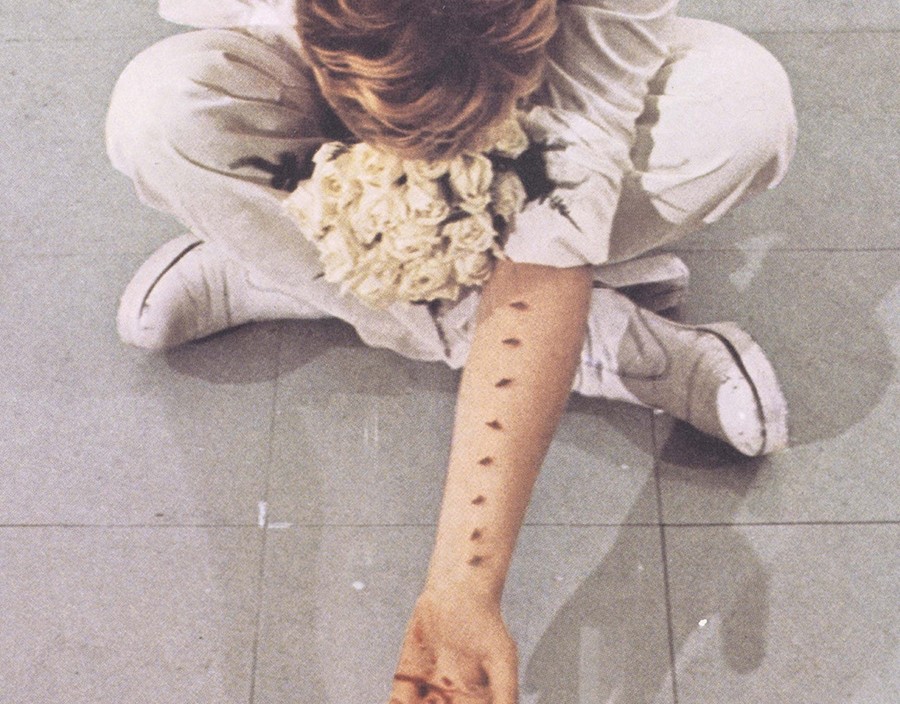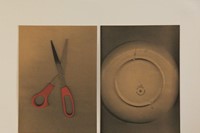From piercing flesh with thorns to sewing a collar onto skin, a new exhibition reveals the subversive power of the body as a medium for feminist art
Lea Vergine's seminal 1974 book, Body Art and Performance: The Body as Language played a fundamental role in defining and popularising performance art – a conceptual genre in which an artist uses their body as a medium, and live actions subsequently become art, whether planned or spontaneous. Now, on the 40th anniversary of its inception, the tome forms the basis of a dynamic new exhibition – The Body As Language: Women and Performance – which traces the evolution of the movement during 1970s Italy through a feminist lens. Here, we pinpoint five of the pioneering women featured in the show and their genre-defining works.

Gina Pane
French artist Gina Pane was a founder and leading member of Art Corporel, the Body Art Movement in France during the 1970s, and throughout all of her work she uses the body as a site for exploring ideas around discomfort, experience and empathy. She is best known for personally inflicted physical suffering. In her performance piece entitled The Conditioning (1973), for example, she lay down on a metal bedframe situated perilously over an area of burning candles. Whilst the candles and bed suggested ideas of sexual love and pleasure, the manner in which Pane positioned her body around these objects caused her harm and surreptitiously threw up questions around the fixed notions of pleasure and pain.
In the performance of Psyche in 1974, the stood in front of a mirror where she used a razor blade to make incisions onto her face and navel. The cuts below her eyebrows caused her to blood to trickle down the face like scarlet tears. In Azione Sentimentale (1974), Pane pressed the thorns from a bouquet of red and white roses into her arms, which she described as a “projection of an intra space.” The powerful and recurring image of her own blood makes Pane’s art both unflinchingly rich in meaning and visually sublime.
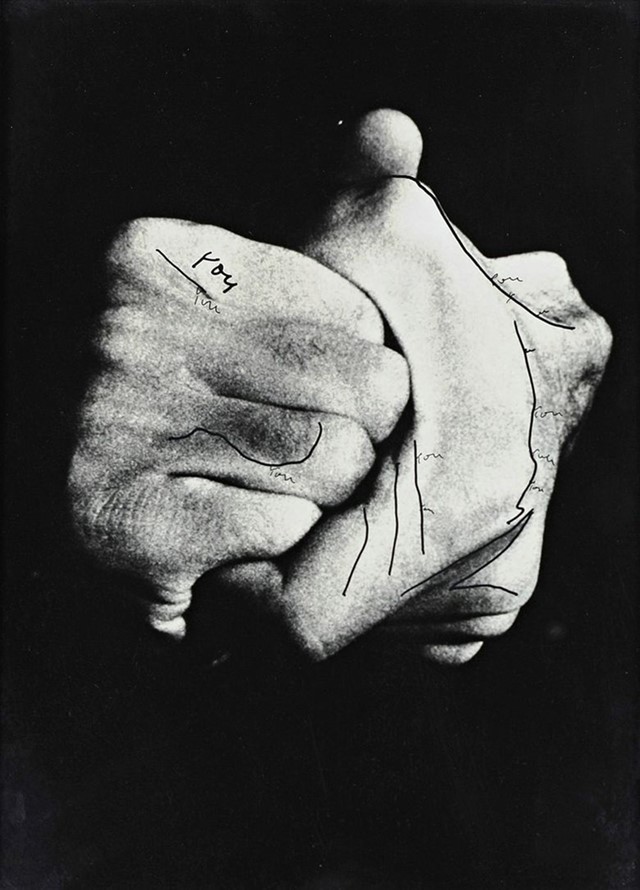
Ketty La Rocca
Born in Italy in 1938, Ketty La Rocca began depicting the human hand in the 1970s, combining words and hands to create a new type of language: a body-language. The artist looked at everyday female experience and found that existing semiotics and linguistics were insufficient. She started her artistic career as a concrete poet and would use collage as a means of criticising the mass media’s representation of the naked female body. In later work, La Rocca would write text over photographs of her hands positioned in different gestures, to communicate her life and experience as a woman in a unique new way, thereby questioning the inherent patriarchy of language.
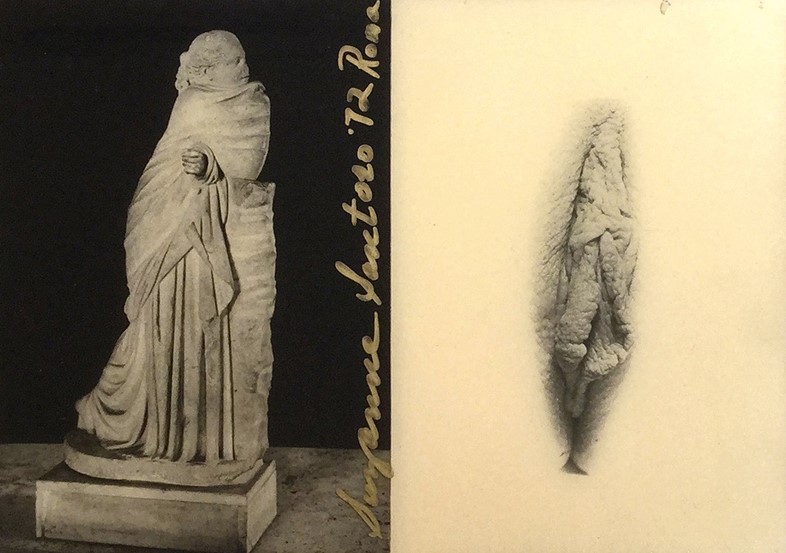
Suzanne Santoro
Suzanne Santoro's 1974 publication Towards New Expression saw the New York artist align images of classical statuary with photographs of female genitalia in an effort to take back the representation of the female body from the hands of male artists. Unsurprisingly, the radical publication caused a stir among viewers and art critics of the time, and famously led to Santoro's censorship from the ICA's Artists’ Books exhibition in 1976. Prior to embarking upon this ambitious project, the artist worked as a sculptor and – after moving to Rome and becoming an active member of the feminist movement 'C.Lonzi’s Rivolta Femminile' – began to look at how male artists smoothed and idealised female genitalia, committing an act of biological censorship on women’s bodies. Thereafter, Santoro devoted herself to liberating the female body from the male gaze and encouraging women to reassert themselves. “We can no longer see ourselves as if we live in a dream," she said on the topic, "or as an imitation of something that just does not reflect the reality of our lives.”
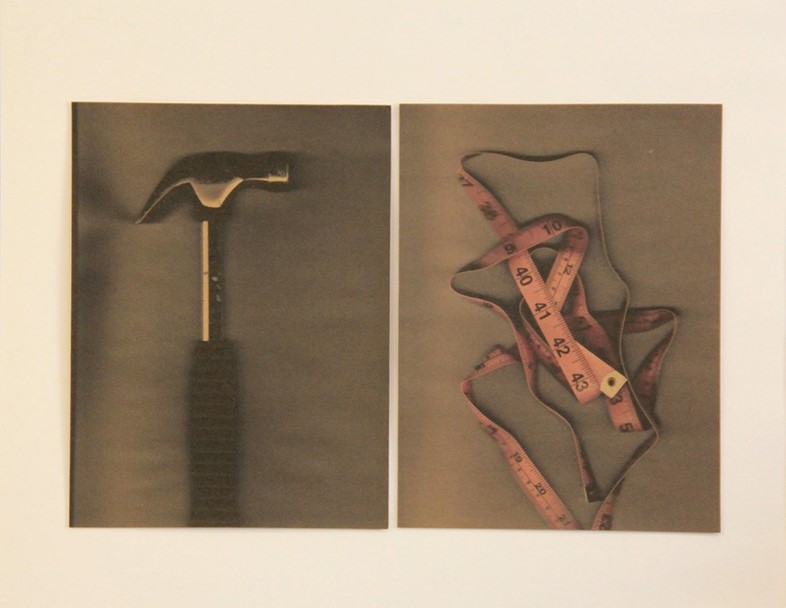
Silvia Giambrone
The work of contemporary artist Silvia Giambrone clearly references the performance art of the 1970s, where everyday objects were used to dissect ideas around human relationships. In her work Vertigo, she places prosaic household objects next to each other in unusual pairings – a tape measure sits alongside a hammer, a pair of scissors next to a dinner plate. Such threatening juxtapositions evoke a sense of foreboding that draws on the history of domestic violence. Giambrone wrote about her practise “I use conceptual art to illustrate my own social commentary with a focus on the relation between subject and power. Through several media including performance, installation, sculpture and sound, I explore body practices and contemporary gender politics.” A more visceral exaple of this is her performance piece Teatro anatomico (2012) which saw Giambrone sew an embroidered collar onto her own skin – a harrowing comment on violence, beauty, pain and the subjection of the female body.
The Body as Language: Women and Performance is at Richard Saltoun Gallery until November 27.
